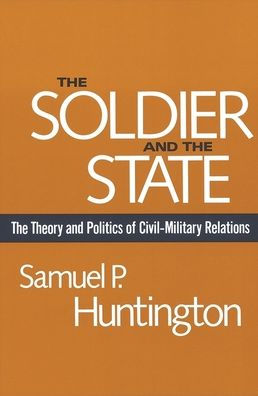Table of Contents
Introduction: National Security and Civil-Military Relations
PART I MILITARY INSTITUTIONS AND THE STATE: THEORETICAL AND HISTORICAL PERSPECTIVES
1. Officership as a Profession
Professionalism and the Military
The Concept of Profession
The Military Profession
2. The Rise of the Military Profession in Western Society
A New Social Type
Mercenary and Aristocratic Officership
Eighteenth-Century Aristocratic Institutions
Preprofessional Meals: The Military Craft and the Natural Genius
The Origins of Professionalism
The Emergence of Professional Institutions, 1800-1875
European Professionalism: General Upton's Summary, 1875
Formulation of the Professional Ethic: The Autonomy and Sub-Ordination of War In Clausewitz's Vom Kriege
3. The Military Mind: Conservative Realism of the Professional Military Ethic
The Meaning of the Military Mind
The Professional Military Ethic
4. Power, Professionalism, and Ideology: Civil-Military Relations In Theory
The Varieties of Civilian Control
The Two Levels of Civil-Military Relations
The Equilibrium of Objective Civilian Control
The Patterns of Civil-Military Relations
5. Germany and Japan: Civil-Military Relations In Practice
The German and Japanese Patterns
Germany: The Tragedy of Professional Militarism
Japan: The Continuity of Political Militarism
PART II MILITARY POWER IN AMERICA: THE HISTORICAL EXPERIENCE, 1789-1940
6. The Ideological Constant: The Liberal Society Versus Military Professionalism
The Historical Constants of American Civil-Military Relations
The Prevalence of Liberalism in the United States
The Liberal Approach to Military Affairs
The Military Hero in Liberal Politics
7. The Structural Constant: The Conservative Constitution
Versus Civilian Control
The Constitutional Absence of Objective Civilian Control
The Framers and Civilian Control
The Militia Clauses and Military Federalism: The Empire Within an Empire
The Separation of Powers: Dual Control Over the National Forces
The Commander in Chief Clause: The Political-Military Hierarchy
Civilian Control and Constitutional Government
8. The Roots of the American Military Tradition Before the Civil War
The Three Strands of American Militarism
The Failure of Federalism: Hamilton's Abortive Professionalism
Technicism
Popularism
Professionalism
9. The Creation of the American Military Profession
The Dominance of Business Pacifism: Industrialism Versus Militarism
Years of Isolation: The Dark and the Bright
The Creative Core: Sherman, Upton, Luce
The Institutions of Professionalism
The Making of the American Military Mind
10. The Failure of the Neo-Hamiltonian Compromise, 1890-1920
The Nature of Neo-Hamiltonianism
Mahan And Wood: The Tragedy of the Military Publicist
The Abortive Identification With Society, 1918-1925
11. The Constancy of Interwar Civil-Military Relations
Business-Reform Hostility and Military Professionalism
Reform Liberalism: The Pragmatic Usages of Militarism
Military Institutions
The American Military Ethic, 1920-1941
PART III THE CRISIS OF AMERICAN CIVIL-MILITARY RELATIONS, 1940-1955
12. World War II: The Alchemy of Power
Civil-Military Relations in Total War
Military Authority and Influence in Grand Strategy
The Military Adjustment to Wartime Power
Civil-Military Relations in Economic Mobilization
The Fruits of Harmony and Acrimony
13. Civil-Military Relations in the Postwar Decade
The Alternatives of Civil-Military Relations
Postwar Perspectives on Civil-Military Relations
Military Influence in American Society
14. The Political Roles of the Joint Chiefs
Political Roles: Substantive and Advocatory
The Joint Chiefs in the Truman Administration
The Korean War: the Generals, the Troops, and the Public
The Joint Chiefs in the First Two Years of the Eisenhower Administration
Conclusion
15. The Separation of Powers and Cold War Defense
The Impact of the Separation of Powers
The Separation of Powers Versus the Separation of Functions
The Separation of Powers Versus Military Professionalism
The Separation of Powers Versus Strategic Monism
16. Departmental Structure of Civil-Military Relations
The Organization Problems of the Postwar Decade
The Joint Chiefs of Staff: Legal Form and Political Reality
The Comptroller: Superego of the Department of Defense
The Role of the Secretary
The Needs of the Office
17. Toward a New Equilibrium
The Requisite For Security
Changes in the Ideological Environment
Conservatism and Security
The Worth of the Military Ideal
Notes
Index







